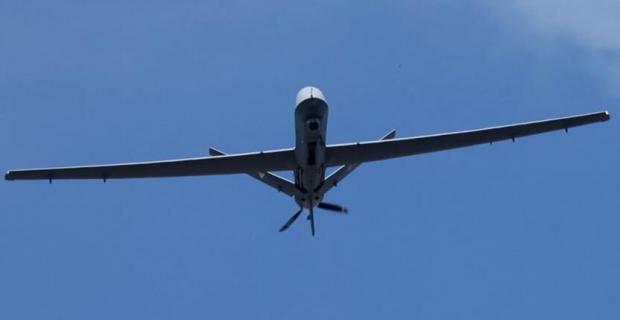
Breaking News
 The lowest cost per watt solar hot water panel. Build guide in description.
The lowest cost per watt solar hot water panel. Build guide in description.
 IRS Reinstates $20,000 / 200-Transaction Threshold For Form 1099-K
IRS Reinstates $20,000 / 200-Transaction Threshold For Form 1099-K
 Mystery Billionaire Who Donated $130M to Pay Our Troops During Shutdown Has Been Identified
Mystery Billionaire Who Donated $130M to Pay Our Troops During Shutdown Has Been Identified
 Steve Bannon and Energy Consultant Dave Walsh on Electricity Shortages in States Including...
Steve Bannon and Energy Consultant Dave Walsh on Electricity Shortages in States Including...
Top Tech News
 Graphene Dream Becomes a Reality as Miracle Material Enters Production for Better Chips, Batteries
Graphene Dream Becomes a Reality as Miracle Material Enters Production for Better Chips, Batteries
 Virtual Fencing May Allow Thousands More Cattle to Be Ranched on Land Rather Than in Barns
Virtual Fencing May Allow Thousands More Cattle to Be Ranched on Land Rather Than in Barns
 Prominent Personalities Sign Letter Seeking Ban On 'Development Of Superintelligence'
Prominent Personalities Sign Letter Seeking Ban On 'Development Of Superintelligence'
 Why 'Mirror Life' Is Causing Some Genetic Scientists To Freak Out
Why 'Mirror Life' Is Causing Some Genetic Scientists To Freak Out
 Retina e-paper promises screens 'visually indistinguishable from reality'
Retina e-paper promises screens 'visually indistinguishable from reality'
 Scientists baffled as interstellar visitor appears to reverse thrust before vanishing behind the sun
Scientists baffled as interstellar visitor appears to reverse thrust before vanishing behind the sun
 Future of Satellite of Direct to Cellphone
Future of Satellite of Direct to Cellphone
 Amazon goes nuclear with new modular reactor plant
Amazon goes nuclear with new modular reactor plant
 China Is Making 800-Mile EV Batteries. Here's Why America Can't Have Them
China Is Making 800-Mile EV Batteries. Here's Why America Can't Have Them
US Flying Surveillance Drones Over Gaza To Monitor Ceasefire

The United States has begun deploying surveillance drones over the Gaza Strip to verify that both Israel and Hamas are adhering to the ceasefire, according to The New York Times on Saturday.
The American drones are said to be operating over the Strip with Israel's coordination and approval, but precise locations or flight paths haven't been disclosed.
The drone flights support the operations of the newly established Civil-Military Coordination Center (CMCC), staffed by some 200 American troops and officers, along with participating allied nations.
The NYT also revealed that the Pentagon had previously used drones to assist the Israeli military in locating hostages in the Strip, or else finding terror cells.
The Pentagon used MQ-9 Reaper drones in Gaza to for these earlier missions. Interestingly the NY Times report actually hints at growing distrust between the US and Israeli sides in terms of implementing the ceasefire:
A former American diplomat and defense official, like some Israeli officials, expressed surprise at the latest U.S. surveillance missions in Gaza, given the two countries' close military ties.
"This is a very intrusive version of U.S. monitoring on a front where Israel perceives an active threat," said Daniel B. Shapiro, who served as the U.S. ambassador to Israel under President Barack Obama and as a special envoy to Israel on Iran under President Joseph R. Biden, Jr.
"If there was total transparency and total trust between Israel and the U.S., there wouldn't be a need for this," Mr. Shapiro said. "But obviously the U.S. wants to eliminate any possibility of misunderstanding."
That distrust was on display also while Vice President JD Vance and other top White House officials were in Israel this week.
Israel's parliament days ago gave initial approval to a controversial bill that would extend Israeli sovereignty over the occupied West Bank, widely viewed as tantamount to full Israeli annexation of the Palestinian territory. A Knesset statement said the proposal seeks "to apply the sovereignty of the State of Israel to the territories of Judea and Samaria (West Bank)."
This largely 'symbolic' vote angered Vance and the American delegation, as it was seen as a provocation which could sink the ceasefire deal - at a moment they were on the ground inspecting the situation in southern Israel.
Vance denounced the "stupid political stunt" which was an "insult" led by hardliner MPs. But he also said it may have merely been "symbolic" but it was "weird" to do especially while he was still in the country.

 China Innovates: Transforming Sand into Paper
China Innovates: Transforming Sand into Paper

